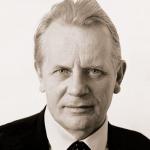
On 3 May the performance of the ballet Shurale will be dedicated to the memory of Askold Makarov, People's Artist of the USSR
Askold Makarov was a hero of Soviet ballet. A classical dancer on a heroic scale and of epic proportions, he created his characters with major “brushstrokes”, breadth of gesture and picture-like poses. When performed by this athletically-built dancer, his characters when static and in monumental sculpture-like poses were no less expressive than when he moved. And the roles Askold Makarov performed were invariably filled with the pathos of the positive hero.
Makarov danced the classics – his repertoire included Siegfried in Swan Lake, Solor in La Bayadère, Basilio in Don Quixote and Jean de Brienne in Raymonda, though the main events in his performing career were linked with new productions. Joining the Kirov Ballet after graduating from the Leningrad School of Dance in 1943, Askold Makarov found himself at the epicentre of the choreographic experiments of those years. The first performer of the roles Ostap in Fenster’s Taras Bulba, the Chinese worker Ma Lichen in Zakharov’s The Red Poppy, Danila in Grigorovich’s The Stone Flower and the Fisherman in Belsky’s Shore of Hope – Askold Makarov embodied in dance an entire plethora of heroic images and collaborated with many choreographers. And yet audiences associated him in their minds first and foremost as one of Leonid Yakobson’s dancers. The meeting of these two masters of their art was to change the destinies of both: the dancer had found a choreographer in whose productions he could display his artistic individuality, while the choreographer had found a dancer who was able fully to bring his vision to life. It was in working with Yakobson that Makarov created his finest roles – the stately bogatyr Ali Batyr in Shurale, the mighty Spartacus who seemed to have stepped down from some ancient Greek pedestal in the eponymous ballet and the imperious and expressive Mayakovsky in The Bedbug. Makarov, a natural in the choreography of the subtle stylist Yakobson, was for many generations the first and unforgettable performer of these roles. Following Askold Makarov’s example, dancers learned the secrets of performing skills, and he taught – Makarov worked at the faculty of choreography at the conservatoire and the Vaganova Academy of Russian Ballet, and he also trained several generations of dancers for the Choreographic Miniatures company which he took over following Yakobson’s death.
3 May marks Askold Makarov’s birthday. The finest tribute that could be paid to him is the fact that the images he created are alive onstage today; the memory of his performance triumphs are retained not just in photographs and films of this inspired dancer – it remains alive in his ballets.